
Category: computing – Page 485

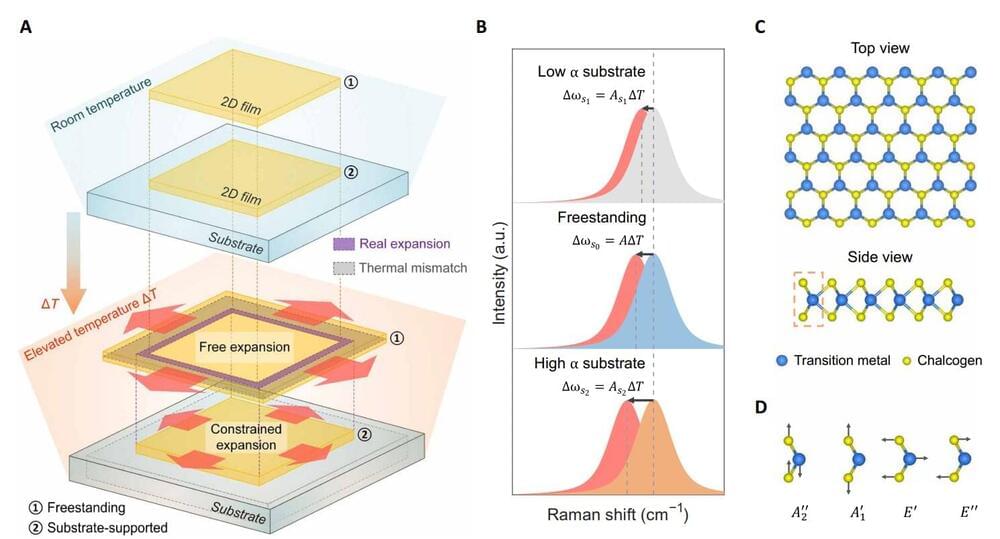
New technique accurately measures how 2D materials expand when heated
Two-dimensional materials, which consist of just a single layer of atoms, can be packed together more densely than conventional materials, so they could be used to make transistors, solar cells, LEDs, and other devices that run faster and perform better.
One issue holding back these next-generation electronics is the heat they generate when in use. Conventional electronics typically reach about 80 degrees Celsius, but the materials in 2D devices are packed so densely in such a small area that the devices can become twice as hot. This temperature increase can damage the device.
This problem is compounded by the fact that scientists don’t have a good understanding of how 2D materials expand when temperatures rise. Because the materials are so thin and optically transparent, their thermal expansion coefficient (TEC)—the tendency for the material to expand when temperatures increase—is nearly impossible to measure using standard approaches.
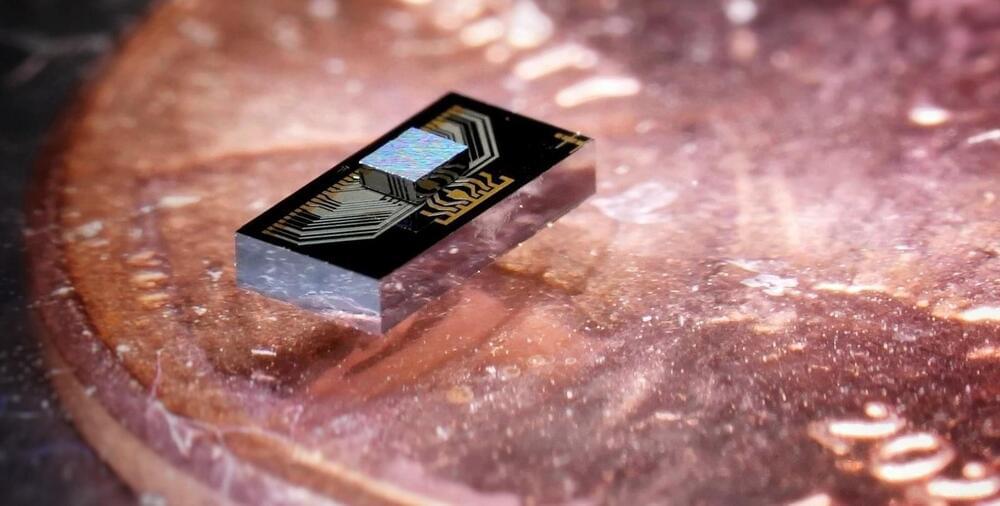
Electronic/photonic chip sandwich pushes boundaries of computing and data transmission efficiency
Engineers at Caltech and the University of Southampton in England have collaboratively designed an electronics chip integrated with a photonics chip (which uses light to transfer data)—creating a cohesive final product capable of transmitting information at ultrahigh speed while generating minimal heat.
Though the two–chip sandwich is unlikely to find its way into your laptop, the new design could influence the future of data centers that manage very high volumes of data communication.
“Every time you are on a video call, stream a movie, or play an online video game, you’re routing data back and forth through a data center to be processed,” says Caltech graduate student Arian Hashemi Talkhooncheh, lead author of a paper describing the two-chip innovation that was published in the IEEE Journal of Solid-State Circuits on November 3.

Even a small nuclear war could cause global famine — here’s what the data shows
Nuclear arsenals remain large enough to fundamentally shift the Earth system in the blink of an eye.
The U.S. and Russia have recently agreed to hold talks on the New START Treaty, and the only accord left regulating the two largest nuclear arsenals in the world. While this is undoubtedly good news, we must not allow it to lull us into complacency. Global events this year, most notably in Ukraine, have raised fears of a nuclear conflict to levels not seen since the cold war. More than 10,000 nuclear warheads remain in the world, and the Kremlin’s language regarding weapons of mass destruction has become increasingly threatening in 2022.
Global famine and climate breakdown
In 1982, a group of scientists, including Carl Sagan, began to raise the alarm about a climate apocalypse that could follow a nuclear war. Using simple computer simulations and historic volcanic eruptions as natural analogs, they showed how smoke that lofted into the stratosphere from urban firestorms could block the sun for years.
They found that this “nuclear winter,” as it came to be called, could trigger catastrophic famine far from the location of the war. Ronald Reagan and Mikhail Gorbachev, leaders of the United States and Soviet Union in the 1980s, both cited this work when they declared that a nuclear war could not be won.

Canon on cusp of nanoimprint chip-making revolution
Canon is moving ahead with a plan to build a new factory in Japan to double the production of its semiconductor lithography equipment.
The planned facility will produce both the standard KrF and i-line machines that constitute the bulk of the division’s sales and the nanoimprint tools that Canon hopes will open a new era in semiconductor manufacturing.
Addressing investors after the announcement of third-quarter results in late October, Canon’s management referred to “our leading-edge nanoimprint lithography equipment.”
Alan Turing: The Nazi-Fighting Computer Genius Betrayed by His Country
Their existence will no longer mystify us. Identified in Namibia, fairy circles are circular regions of land devoid of vegetation that range in diameter from 7 to 49 feet (2 to 15 meters) and are frequently surrounded by a ring of promoted grass growth.
Alan Turing has few equals in the 20th century for sheer brilliance and lasting impact, but the great genius’s life was cut tragically short after being betrayed by the country he helped save from the Nazis.
MOS Technology 6502
To show how computer chips are improving a bit, my first computer, an Apple II+ based on the 6,502 chip, had 7 bytes of memory on the chip. Nvidia’s H100 chip has 85,986,377,728 bytes of memory on it!
The 6,502 was a very successful chip and is still made today, with over 6 billion units sold!
(My home PC has about 283,506,646,208 bytes of memory but that is contained in multiple chips.)
(typically pronounced “sixty-five-oh-two” or “six-five-oh-two”)[3] is an 8-bit microprocessor that was designed by a small team led by Chuck Peddle for MOS Technology. The design team had formerly worked at Motorola on the Motorola 6800 project; the 6,502 is essentially a simplified, less expensive and faster version of that design.
When it was introduced in 1975, the 6,502 was the least expensive microprocessor on the market by a considerable margin. It initially sold for less than one-sixth the cost of competing designs from larger companies, such as the 6,800 or Intel 8080. Its introduction caused rapid decreases in pricing across the entire processor market. Along with the Zilog Z80, it sparked a series of projects that resulted in the home computer revolution of the early 1980s.
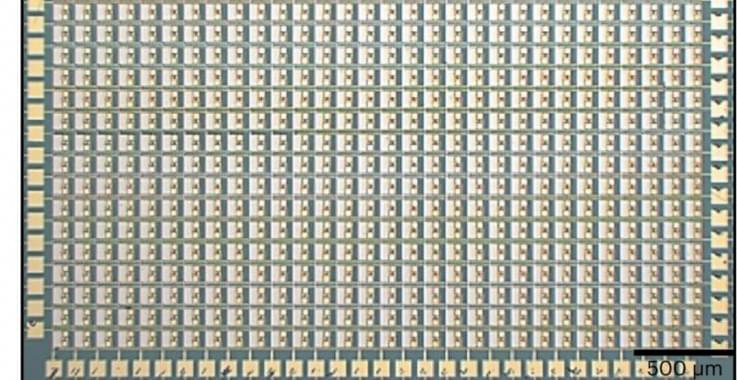
Researchers build a working camera out of atomically thin semiconductors
Since the isolation of graphene, we’ve identified a number of materials that form atomically thin sheets. Like graphene, some of these sheets are made of a single element; others form from chemicals where the atomic bonds naturally create a sheet-like structure. Many of these materials have distinct properties. While graphene is an excellent conductor of electricity, a number of others are semiconductors. And it’s possible to tune their properties further based on how you arrange the layers of a multi-sheet stack.
Given all those options, it shouldn’t surprise anyone that researchers have figured out how to make electronics out of these materials, including flash memory and the smallest transistors ever made, by some measures. Most of these, however, are demonstrations of the ability to make the hardware—they’re not integrated into a useful device. But a team of researchers has now demonstrated that it’s possible to go beyond simple demonstrations by building a 900-pixel imaging sensor using an atomically thin material.
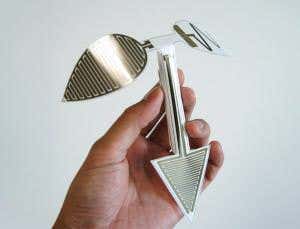
Print a working paper computer on an $80 inkjet
Circa 2013 face_with_colon_three
“IMAGINE printing out a paper computer and tearing off a corner so someone else can use part of it.” So says Steve Hodges of Microsoft Research in Cambridge, UK. The idea sounds fantastical, but it could become an everyday event thanks in part to a technique he helped develop.
Hodges, along with Yoshihiro Kawahara and his team at the University of Tokyo, Japan, have found a way to print the fine, silvery lines of electronic circuit boards onto paper. What’s more, they can do it using ordinary inkjet printers, loaded with ink containing silver nanoparticles. Last month Kawahara demonstrated a paper-based moisture sensor at the Ubicomp conference in Zurich, Switzerland.
Kawahara says the idea is perfect for the growing maker movement of inventors and tinkerers. Hobbyists will be able to test circuit designs by simply printing them out and throwing away anything that doesn’t work. That will reduce much of electronics to a craft akin to “sewing or origami”, he says.
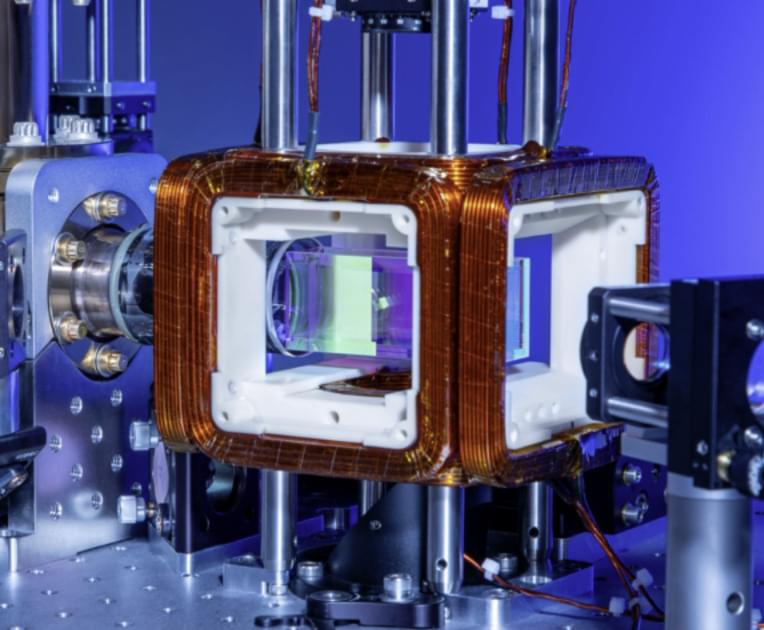
Amazon Braket launches Aquila, the first neutral-atom quantum processor from QuEra Computing
Quantum researchers require access to different types of quantum hardware from digital, also known as gate-based, quantum processing units (QPUs) to analog devices that are capable of addressing specific problems that are hard to solve using classical computers. Today, Amazon Braket, the quantum computing service from AWS, continues to deliver on its commitment to provide that choice by launching Aquila, pictured in Figure 1 below, a new neutral-atom QPU from QuEra Computing with up to 256 qubits. As a special purpose device designed for solving optimization problems and simulating quantum phenomena in nature, it enables researchers to explore a new analog paradigm of quantum computing.